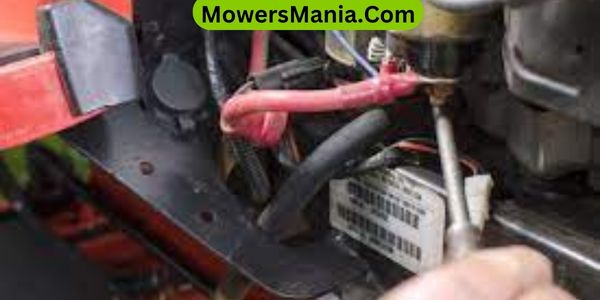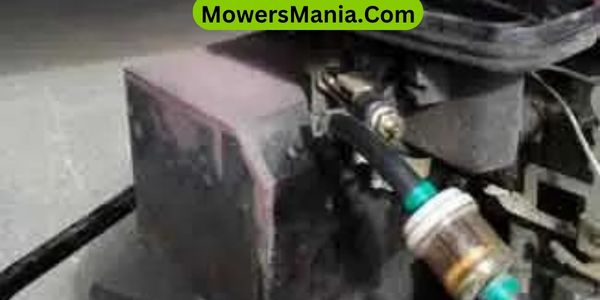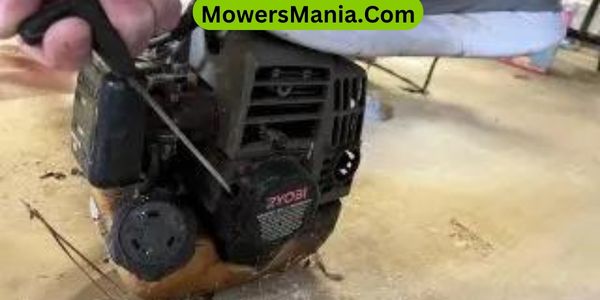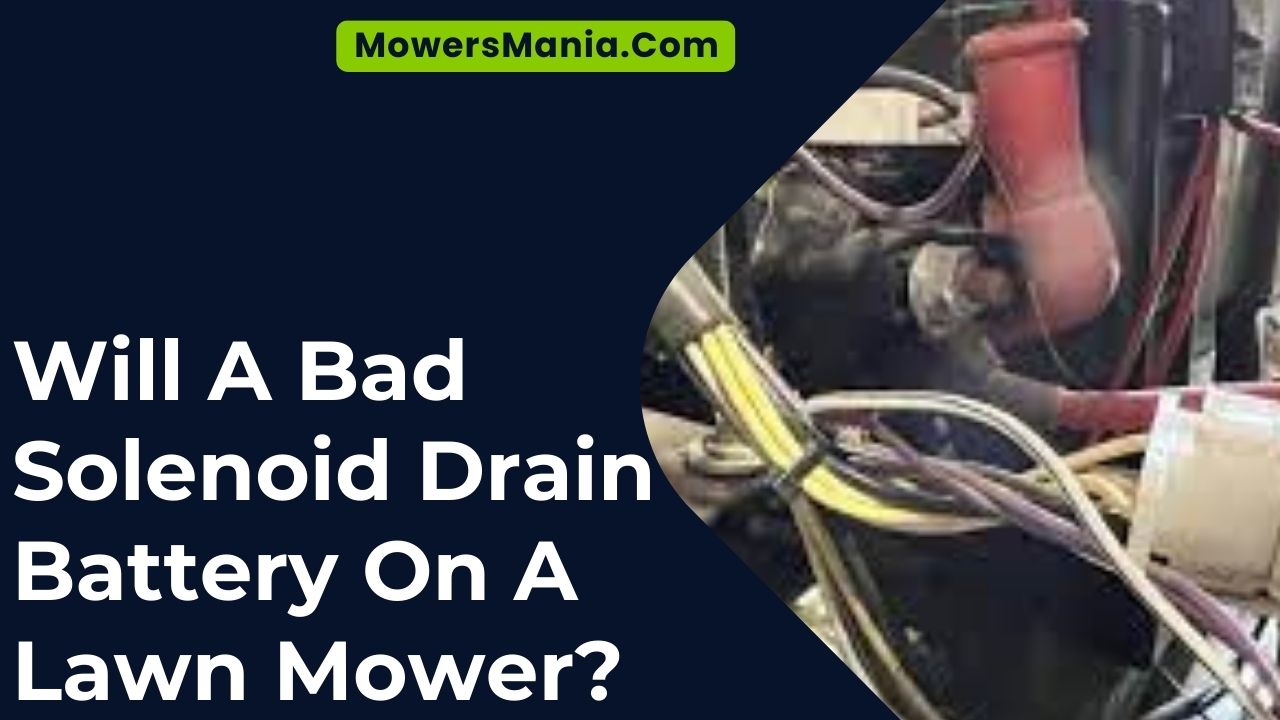Wondering if a bad solenoid could be sapping your lawn mower’s battery? It’s a valid concern.
A malfunctioning solenoid can indeed drain the battery, leaving you frustrated when it’s time to mow.
But fear not! By understanding the signs and impact of a faulty solenoid on your battery, you can troubleshoot and prevent this issue.

Understanding the Solenoid’s Function
When diagnosing a potential drain on your lawn mower’s battery, you need to understand the solenoid’s function to determine if it’s the cause.
The solenoid is a crucial component that acts as a switch to connect the battery to the starter motor when you turn the ignition key.
It essentially serves as a bridge between the battery and the starter, allowing the high amperage needed to start the engine to flow through. If the solenoid malfunctions, it can remain engaged even after the engine starts, causing a drain on the battery.
To understand the solenoid’s function, you should know that it operates using an electromagnetic coil to pull a plunger that closes the high-current contacts.
When the ignition is turned, the coil becomes magnetized, pulling the plunger to make the connection between the battery and the starter.
If the plunger gets stuck due to dirt or corrosion, it can lead to a continuous drain on the battery even when the engine is off.
Signs of a Faulty Solenoid
If you suspect a faulty solenoid, you can look for several signs that indicate potential issues with this component in your lawn mower. If the solenoid remains engaged after starting the engine, it can lead to a continuous drain on the battery, causing problems with starting the mower.
Here are some signs to look out for:
- Clicking Sound: When you turn the key to start the lawn mower and hear a clicking sound but the engine doesn’t turn over, it could be a sign of a faulty solenoid.
- Intermittent Starting: If the mower starts sometimes but not consistently, it may be due to a faulty solenoid that isn’t consistently engaging.
- No Response: When you turn the key and there’s no response at all, it could indicate a complete failure of the solenoid to engage and send power to the starter motor.
Being aware of these signs can help you identify a potential issue with the solenoid in your lawn mower, allowing for timely maintenance or replacement to ensure your mower operates smoothly.
Impact of a Bad Solenoid on Battery

A bad solenoid’s impact on your lawn mower’s battery can lead to frequent drainage and difficulty starting the engine. When the solenoid malfunctions, it may fail to properly engage the starter motor, causing it to draw excessive current from the battery.
This increased demand on the battery can lead to quicker drainage and reduced capacity, ultimately resulting in difficulty starting your lawn mower.
Additionally, a faulty solenoid can create a parasitic drain on the battery when the mower isn’t in use, further exacerbating the issue of battery drainage.
This means that even when the mower is turned off, the battery continues to lose its charge due to the malfunctioning solenoid.
As a result, you may find yourself having to jump-start your lawn mower frequently or needing to recharge the battery more often.
It’s important to address a bad solenoid promptly to prevent unnecessary strain on the battery and ensure reliable starting performance for your lawn mower.
Troubleshooting a Malfunctioning Solenoid
To troubleshoot a malfunctioning solenoid, you can start by checking for any visible signs of damage or corrosion. Look for frayed wires, loose connections, or any other physical damage that may be affecting the solenoid’s performance.
Once you’ve visually inspected the solenoid, you can proceed with the following steps to troubleshoot the issue:
- Testing the Solenoid: Use a multimeter to test the solenoid for continuity and proper functioning. This will help determine if the solenoid is receiving power and if it’s capable of engaging the starter system.
- Checking the Voltage: Verify that the solenoid is receiving the correct voltage from the battery. A voltage drop across the solenoid can indicate a faulty connection or a worn-out solenoid.
- Inspecting the Ground Connection: Ensure that the solenoid has a solid ground connection. A poor ground can prevent the solenoid from functioning correctly, leading to starting issues.
Preventing Solenoid-Related Battery Drain

To prevent solenoid-related battery drain on your lawn mower, regularly inspect the solenoid for any signs of wear or damage. The solenoid is a crucial component in the starting system, and any malfunction can lead to unnecessary battery drain.
Check for corrosion, loose connections, or frayed wires that may impede the solenoid’s performance.
Ensure that the solenoid is securely mounted and protected from excessive moisture or debris. Additionally, consider applying dielectric grease to the electrical connections to prevent corrosion and maintain proper conductivity.
Furthermore, practicing good maintenance habits can help prevent solenoid-related battery drain. Keep the battery terminals clean and tight to ensure a strong connection.
Regularly test the battery to confirm its health and recharge it as needed. When storing the lawn mower for an extended period, consider disconnecting the battery to prevent any parasitic drain from the solenoid or other electrical components.
Frequently Asked Questions [FAQs]
Can a Bad Solenoid Cause Other Electrical Issues on a Lawn Mower, Besides Draining the Battery?
Yes, a bad solenoid on a lawn mower can cause other electrical issues besides draining the battery. It can lead to starting problems, erratic engine performance, and failure of other electrical components.
How Often Should a Solenoid Be Replaced in a Lawn Mower?
When it comes to replacing the solenoid in a lawn mower, it’s recommended to do so every 3-5 years for optimal performance. Regular maintenance will ensure that the solenoid continues to function effectively.
Is It Safe to Jumpstart a Lawn Mower With a Bad Solenoid?
Yes, it’s safe to jumpstart a lawn mower with a bad solenoid. Ensure the mower is off and use a car with a charged battery. Connect the cables properly, start the car, and then the mower. Once started, remove the cables carefully.
Can a Bad Solenoid Affect the Performance of the Lawn Mower’s Engine?
A bad solenoid can affect the performance of the lawn mower’s engine. It may cause starting issues, erratic operation, or prevent the engine from running altogether. Consider checking and replacing the solenoid if experiencing engine problems.
Are There Any Warning Signs to Look Out for That Indicate a Solenoid Is About to Fail?
If a solenoid is about to fail, you might notice issues like difficulty starting the engine, a clicking sound when you turn the key, or sporadic operation of the mower. Keep an eye out for these signs.
Conclusion
So in conclusion, a bad solenoid can indeed drain the battery on a lawn mower.
It’s important to pay attention to the signs of a faulty solenoid and take action to troubleshoot and prevent any potential battery drain.
By understanding the solenoid’s function and being proactive in maintenance, you can ensure that your lawn mower’s battery stays in good working condition.



